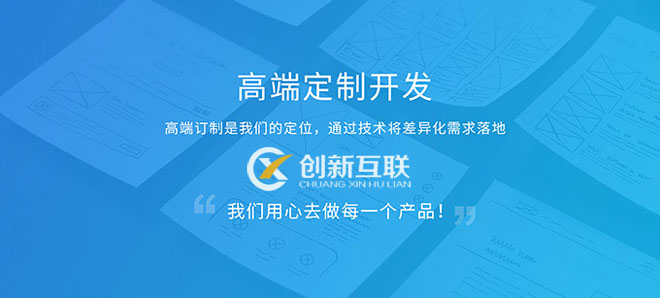HDFS2.X中NameNode块报告处理的示例分析-创新互联
这篇文章主要介绍了HDFS2.X中NameNode块报告处理的示例分析,具有一定借鉴价值,感兴趣的朋友可以参考下,希望大家阅读完这篇文章之后大有收获,下面让小编带着大家一起了解一下。

NameNode会接收两种情况的块报告,DataNode全部块报告与增量块报告。
4.1全量报告分析
目前全量报告以周期性进行报告,既然已经有启动时候的全量数据块报告,错误块报告,增量块报告(包括删除块报告),为什么还需要周期性全量块报告呢?比如某DataNode接受到数据块但是增量报告失败,那就需要周期性报告来解决了,或者NameNode给DN发送了删除块的命令,但是由于网络等异常,DN没收收到删除命令,这样DN再把这些数据块报告上来就是无效块,需要再次放入无效队列,下次心跳再命令DN删除;同时比如每次块报告会清理DatanodeDescriptor对象维护的块列表还有某个块的信息,但是DN节点再也没有报告上来,定时清除这些无效信息,有助于提高块列表的操作性能,从而提供NameNode的性能。同时我们可以考虑分析是否还有其他原因可能影响NameNode的性能。
为了提高HDFS启动速度,在Hadoop2.0版本中全量块报告分为了两种:启动时候块报告与非启动的时候块报告,即是否是第一次块报告。那么具体又是如何来提高启动速度的呢?在启动的时候,不计算哪些文件元数据需要删除,不计算无效快,这些处理都推迟到下一次块报告进行处理
对于第一次块报告,代码调用流程为:NameNodeRpcServer.blockReport()->BlockManager. processReport()->BlockManager.processFirstBlockReport().对Standby节点,如果报告的数据块所相关元数据日志从节点还没有加载完毕,则会将报告的块信息加入一个队列,当Standby节点加载元数据后,再处理该消息队列,第一次块报告处理详细代码如下,可以看到,为了提高报告速度,只有简单的几步进行块报告处理,仅有验证块是否损坏,然后直接判断块状态是否为FINALIZED状态,如果是,就直接建立块与DN节点的映射。
[java] view plain copy
private void processFirstBlockReport(final DatanodeDescriptor node,
final BlockListAsLongs report) throws IOException {
if (report == null) return;
assert (namesystem.hasWriteLock());
assert (node.numBlocks() == 0);
BlockReportIterator itBR = report.getBlockReportIterator();
while(itBR.hasNext()) {
Block iblk = itBR.next();
ReplicaState reportedState = itBR.getCurrentReplicaState();
//对于从节点shouldPostponeBlocksFromFuture为true;判断块时间戳//是否大于目前时间
if (shouldPostponeBlocksFromFuture&&
namesystem.isGenStampInFuture(iblk.getGenerationStamp())) {
//将块信息加入队列,从节点消化完相关日志,会处理该队列
queueReportedBlock(node, iblk, reportedState,
QUEUE_REASON_FUTURE_GENSTAMP);
continue;
}
BlockInfo storedBlock = blocksMap.getStoredBlock(iblk);
// If block does not belong to any file, we are done.
if (storedBlock == null) continue;
// If block is corrupt, mark it and continue to next block.
BlockUCState ucState = storedBlock.getBlockUCState();
BlockToMarkCorrupt c = checkReplicaCorrupt(
iblk, reportedState, storedBlock, ucState, node);
if (c != null) {
//对于从节点,先将块信息加入pendingDNMessages队列
//将块信息加入队列,从节点消化完相关日志,会处理该队列,如果该块还是被损坏,就真的是损坏了
if (shouldPostponeBlocksFromFuture) {
// In the Standby, we may receive a block report for a file that we
// just have an out-of-date gen-stamp or state for, for example.
queueReportedBlock(node, iblk, reportedState,
QUEUE_REASON_CORRUPT_STATE);
} else {
//对于主节点,有块损坏,直接标记为损坏
markBlockAsCorrupt(c, node);
}
continue;
}
// If block is under construction, add this replica to its list
if (isBlockUnderConstruction(storedBlock, ucState, reportedState)) {
((BlockInfoUnderConstruction)storedBlock).addReplicaIfNotPresent(
node, iblk, reportedState);
//and fall through to next clause
}
//add replica if appropriate
if (reportedState == ReplicaState.FINALIZED) {
addStoredBlockImmediate(storedBlock, node);
}
}
}
而对于非第一次块报告,情况就要复杂一些了,对于报告的每个块信息,不仅会建立块与DN的映射,而且均会检查块是否损坏,块是是否无效,元数据是否已经无效应该删除,是否为UC状态的块等,该过程主要由方法processReport来完成
[java] view plain copy
private void processReport(final DatanodeDescriptor node,
final BlockListAsLongs report) throws IOException {
// Normal case:
// Modify the (block-->datanode) map, according to the difference
// between the old and new block report.
//
Collection
toAdd = new LinkedList (); Collection
toRemove = new LinkedList (); Collection
toInvalidate = new LinkedList (); Collection
toCorrupt = new LinkedList (); Collection
toUC = new LinkedList (); //统计块,并且判断块是否应该删除,是否应该添加到blocksMap列表等
reportDiff(node, report, toAdd, toRemove, toInvalidate, toCorrupt, toUC);
// Process the blocks on each queue
for (StatefulBlockInfo b : toUC) {
addStoredBlockUnderConstruction(b.storedBlock, node, b.reportedState);
}
for (Block b : toRemove) {
removeStoredBlock(b, node);
}
for (BlockInfo b : toAdd) {
addStoredBlock(b, node, null, true);
}
for (Block b : toInvalidate) {
NameNode.stateChangeLog.info("BLOCK* processReport: block "
+ b + " on " + node + " size " + b.getNumBytes()
+ " does not belong to any file.");
addToInvalidates(b, node);
}
for (BlockToMarkCorrupt b : toCorrupt) {
markBlockAsCorrupt(b, node);
}
}
在reportDiff方法内,实现如下:
[java] view plain copy
private void reportDiff(DatanodeDescriptor dn,
BlockListAsLongs newReport,
Collection
toAdd, // add to DatanodeDescriptor Collection
toRemove, // remove from DatanodeDescriptor Collection
toInvalidate, // should be removed from DN Collection
toCorrupt, // add to corrupt replicas list Collection
toUC) { // add to under-construction list // place a delimiter分隔符 in the list which separates blocks
// that have been reported from those that have not
BlockInfo delimiter = new BlockInfo(new Block(), 1);
boolean added = dn.addBlock(delimiter);
assert added : "Delimiting block cannot be present in the node";
int headIndex = 0; //currently the delimiter is in the head of the list
int curIndex;
if (newReport == null)
newReport = new BlockListAsLongs();
// scan the report and process newly reported blocks
BlockReportIterator itBR = newReport.getBlockReportIterator();
while(itBR.hasNext()) {
Block iblk = itBR.next();
ReplicaState iState = itBR.getCurrentReplicaState();
BlockInfo storedBlock = processReportedBlock(dn, iblk, iState,
toAdd, toInvalidate, toCorrupt, toUC);
// move block to the head of the list
if (storedBlock != null && (curIndex = storedBlock.findDatanode(dn)) >= 0) {
headIndex = dn.moveBlockToHead(storedBlock, curIndex, headIndex);
}
}
// collect blocks that have not been reported
// all of them are next to the delimiter
//收集DN对象中所有没有被DN节点报告上来的块,将这些块信息从DN对象维护的列表中删除,这样可以有效控制DN块列表中存在大量的无效块,
//影响NameNode的操作性能
Iterator it = new DatanodeDescriptor.BlockIterator(
delimiter.getNext(0), dn);
while(it.hasNext())
toRemove.add(it.next());
dn.removeBlock(delimiter);
}
4.2增量报告分析
相比于全量块报告方式,增量报告报告DN节点很短时间内已经接收完成,或者正在接受或者删除的块,而且为了提高文件上传的效率, DN节点应该尽快将接受到的块报告给NameNode,现在引入了RECEIVING_BLOCK这个一个块状态,有可能就是为了提高写入速度。
增量块报告流程图
正在接收的块与已经接收完的块,除了在数据块状态不一样外,其他基本相同,其接收块代码调用流程如下:NameNodeRpcServer.blockReceivedAndDeleted()->BlockManager.processIncrementalBlockReport()->BlockManager. addBlock()->BlockManager.processAndHandleReportedBlock()->BlockManager.processReportedBlock(),在方法processReportedBlock中,首先判断报告的块是否元数据已经从主节点读取到,如果没有加入消息列表
[java] view plain copy
//postpone延期
//如果是从节点,可能虽然DN节点将块信息报告上来,但是元数据还没有从日志中消化到
if (shouldPostponeBlocksFromFuture &&
namesystem.isGenStampInFuture(block.getGenerationStamp())) {
queueReportedBlock(dn, block, reportedState,
QUEUE_REASON_FUTURE_GENSTAMP);
return null;
}
然后从blocksMap中查询到数据块对于文件inode,判断文件是否存在;如果判断块属于损害块,冗余分数是否不够等情况,如果块一切正常,且状态为完成,将将其加入blocksMap等集合列表。具体代码如下:
[java] view plain copy
//检查块是否已经被损害
BlockToMarkCorrupt c = checkReplicaCorrupt(
block, reportedState, storedBlock, ucState, dn);
if (c != null) {
if (shouldPostponeBlocksFromFuture) {
// If the block is an out-of-date generation stamp or state,
// but we're the standby, we shouldn't treat it as corrupt,
// but instead just queue it for later processing.
queueReportedBlock(dn, storedBlock, reportedState,
QUEUE_REASON_CORRUPT_STATE);
} else {
//将其加入损害列表
toCorrupt.add(c);
}
return storedBlock;
}
//如果该数据块正在被构建,加入构建列表
if (isBlockUnderConstruction(storedBlock, ucState, reportedState)) {
toUC.add(new StatefulBlockInfo(
(BlockInfoUnderConstruction)storedBlock, reportedState));
return storedBlock;
}
//add replica if appropriate
//如果报告的块状态为FINALIZED且该DN没有报告该块,则加入添加队列
if (reportedState == ReplicaState.FINALIZED
&& storedBlock.findDatanode(dn) < 0) {
toAdd.add(storedBlock);
}
return storedBlock;
感谢你能够认真阅读完这篇文章,希望小编分享的“HDFS2.X中NameNode块报告处理的示例分析”这篇文章对大家有帮助,同时也希望大家多多支持创新互联,关注创新互联-成都网站建设公司行业资讯频道,更多相关知识等着你来学习!
当前名称:HDFS2.X中NameNode块报告处理的示例分析-创新互联
网站路径:http://mswzjz.cn/article/djjsic.html